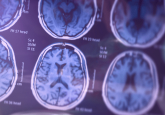Using 3D-printed cochleae replicas with machine learning to improve “blurred” hearing in cochlear implant patients

A research group at the University of Cambridge (UK) have combined 3D-printed cochleae replicas with machine learning in order to better tackle the issue of “blurred” hearing common in cochlear implant patients. The human cochlea is a hollow, spiral-shaped bone of the auditory inner ear which is essential for hearing. In patients with hearing impairments due to genetics, disease or trauma, a cochlear implant is sometimes required in order to reestablish adequate hearing. Indeed, cochlear implants have been transformative to hundreds of thousands of individuals suffering with severe or substantial hearing loss. However, cochlear implants are often subject to “current spread”, or electrical stimulus spread, which affects their performance and can lead to “blurred” hearing for users. This phenomenon is due to...





